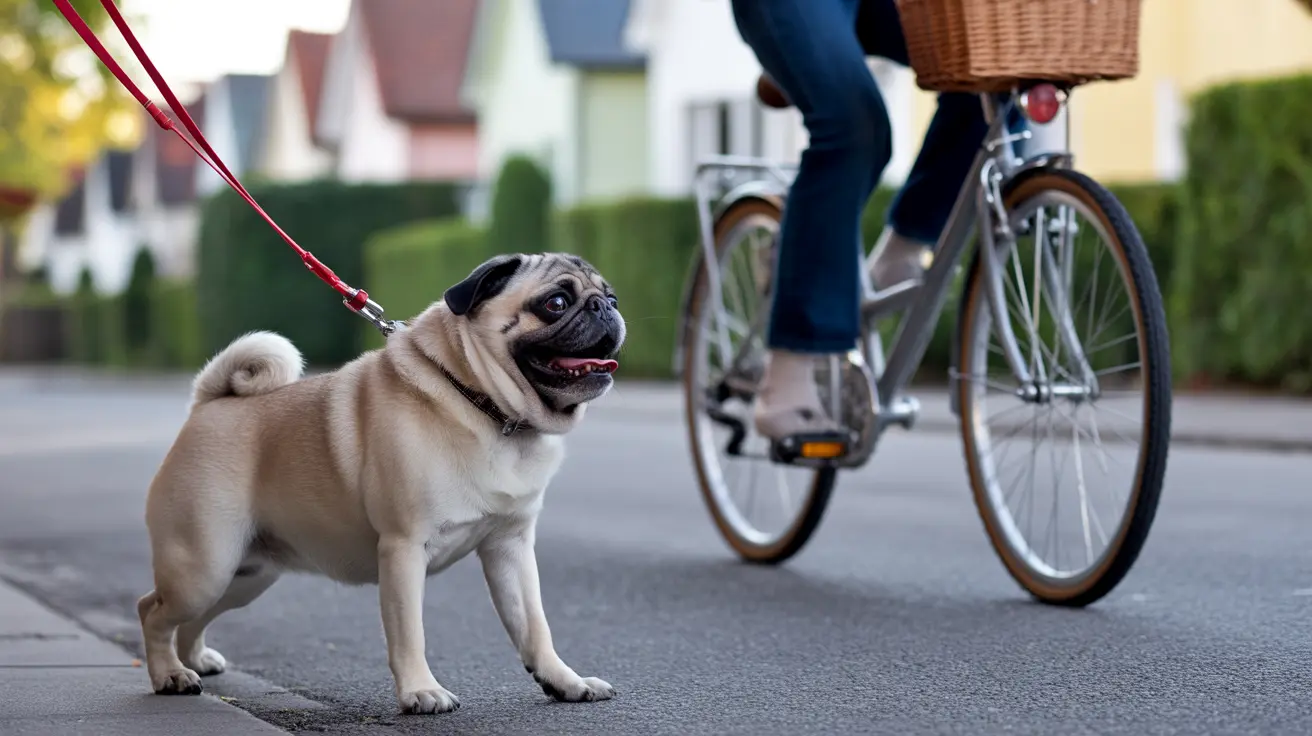If your dog is reactive on leash, you're not alone. Many pet owners struggle with dogs that bark, lunge, or display seemingly aggressive behavior during walks. This comprehensive guide will help you understand why your dog acts this way and provide effective solutions to make walks enjoyable again.
What Causes Leash Reactivity in Dogs?
Leash reactivity occurs when dogs overreact to triggers while on leash, typically through barking, lunging, or growling. This behavior often stems from two primary emotions: fear or frustration. Understanding the root cause is crucial for effective training.
Fear-based reactivity happens when dogs feel threatened and unable to escape due to the leash. Frustration-based reactivity occurs when dogs want to interact with something (like another dog or person) but can't because of the leash's restriction.
Identifying Your Dog's Reactive Triggers
Common triggers for leash reactive dogs include:
- Other dogs approaching
- Strangers walking nearby
- Moving vehicles or bicycles
- Loud noises or sudden movements
- Specific objects or environments
Observe your dog's body language carefully. Tail tucking, hackles raising, and whale eyes (showing whites of eyes) often indicate fear-based reactivity. Pulling forward, play bowing, or excited barking typically suggest frustration-based reactivity.
Effective Training Strategies for Leash Reactive Dogs
Management Techniques
Before beginning training, implement these management strategies:
- Choose quiet walking routes with fewer triggers
- Walk during off-peak hours
- Use proper equipment (front-clip harness, 6-foot leash)
- Maintain adequate distance from known triggers
Positive Reinforcement Training
The most effective approach to managing leash reactivity involves positive reinforcement:
- Reward calm behavior when triggers are present
- Practice "Look at That" exercises to desensitize your dog
- Use high-value treats specifically for reactivity training
- Keep training sessions short and successful
Building Confidence Through Counter-conditioning
Counter-conditioning helps change your dog's emotional response to triggers:
- Start at a distance where your dog notices triggers but remains calm
- Create positive associations using treats and praise
- Gradually decrease distance as your dog's comfort level improves
- Never force interactions or push beyond your dog's threshold
Professional Support and Resources
While many cases of leash reactivity can be managed at home, some situations require professional help:
- Consult a certified positive reinforcement trainer
- Consider working with a veterinary behaviorist
- Join support groups for owners of reactive dogs
- Maintain consistent communication with your veterinarian
Frequently Asked Questions
Why does my dog become aggressive when on a leash but friendly when off-leash?
This difference in behavior occurs because leashes restrict natural dog greeting behaviors and movement options. When leashed, dogs may feel trapped or frustrated, leading to reactive behaviors that don't appear during off-leash interactions.
How do I determine if my dog's leash reactivity is caused by fear or frustration?
Observe your dog's body language: fear-based reactivity typically includes backing away, tucked tail, and defensive posturing. Frustration-based reactivity usually involves pulling toward triggers, excited barking, and playful body language.
What training methods can help reduce my dog's reactivity on walks without causing further stress?
Use positive reinforcement techniques like treat-and-retreat, counter-conditioning, and desensitization. Avoid punishment-based methods, which can increase anxiety and worsen reactivity.
Can early socialization prevent or reduce leash reactivity in dogs?
Yes, proper socialization during puppyhood can significantly reduce the likelihood of developing leash reactivity. Expose puppies to various environments, people, and dogs in positive, controlled situations.
How can I recognize and manage leash reactivity in my dog during walks?
Watch for early warning signs like staring, stiffening, or changes in breathing. Create distance from triggers, use attention exercises, and reward calm behavior. Always stay below your dog's stress threshold during training.
Conclusion
Managing a reactive dog requires patience, consistency, and understanding. With proper training techniques and a commitment to positive reinforcement, most dogs can learn to remain calmer on leash. Remember that progress takes time, and every small improvement is worth celebrating.






